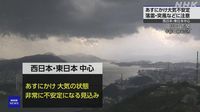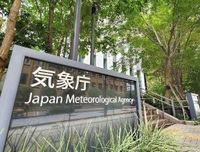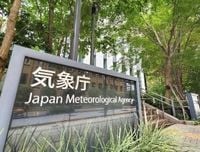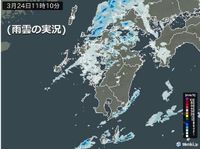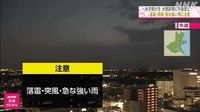Japan is bracing for tumultuous weather conditions starting March 24, 2025, as the Japan Meteorological Agency (JMA) warns of sudden strong rains, lightning, and severe gusts of wind including tornadoes. The unsettling atmospheric conditions are expected to prevail across eastern and western regions of the country until the morning of March 25.
The JMA has advised residents to exercise caution, noting that the combination of cold air and warm, humid air will foster an unstable atmosphere conducive to adverse weather phenomena. "The Japan Meteorological Agency is calling for caution regarding lightning, severe gusts of wind such as tornadoes, and sudden heavy rain in eastern Japan on March 24, 2025," the agency stated.
Among the areas most at risk is Kyushu, where severe thunderstorms may develop. Residents are urged to remain vigilant and seek shelter indoors if conditions worsen. This is especially crucial if towering cumulonimbus clouds start to form, as they can lead to dangerous weather events including hail. The JMA explicitly mentioned, "There is also a possibility of hail falling, and attention should be paid to the management of crops and agricultural facilities." Farmers and agricultural managers are advised to take preventive steps to protect their crops from potential damage.
As the rain patters and the winds howl, those living in the Kanto-Koshin region will experience localized thunderstorms beginning in the evening of March 24. The JMA foresees that unstable conditions will not only persist into March 25 but may also escalate, commanding vigilance against lightning and supercell storms.
Meanwhile, residents should brace for temperatures that may swing dramatically. For instance, daytime highs are forecasted to reach a balmy 24 degrees Celsius in cities such as Saitama and Maebashi, while the drop in temperature across the week may exceed 10 degrees, potentially impacting the health of those exposed to sharp shifts in climate.
Adding to the list of weather concerns, yellow sand from the Asian continent is predicted to arrive from March 25 to March 26. The JMA has noted that visible haziness will affect many areas, with visibility dropping below 10 kilometers, and in some locations, it may dip to 5 kilometers or less, raising concerns over traffic disruptions.
"The adherence of yellow sand to laundry dried outdoors is expected, and if visibility falls under 5 kilometers, there is a definite possibility of traffic impact," the JMA emphasized, urging people to stay informed regarding these evolving conditions.
Furthermore, the anticipated influx of yellow sand poses health risks, particularly for those suffering from respiratory issues like asthma and seasonal allergies. Individuals are advised to wear masks when outdoors to help mitigate the adverse health effects of inhaling particulate matter.
As the situation develops, JMA predicts that from March 26 onwards, conditions may stabilize, though public health recommendations will remain crucial in the interim. Attractive spring outings, such as hanami (flower viewing), could be impacted by the unpredictable weather this week; hence, residents should dress appropriately and rehearse safety measures amidst the weather chaos.
In summary, Japan is set to experience a range of severe meteorological conditions from March 24 to March 26, 2025, characterized by thunderstorms, heavy rain, hail potential, and the arrival of yellow sand, necessitating prudent safety measures and health precautions for all residents.
